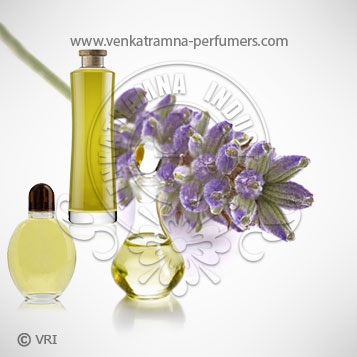
| Botanical Name | Lavendula Officinalis |
| Common Name | Lavender |
| Country of Origin | Northern and Eastern Africa |
| Solubility | Alcohol soluble |
| Specific Gravity | 0.9250 to 0.9450 |
| Optical Rotation | -24 – -27 @ 20°C |
| Refrective Index | 1.535 –1.538 @ 20°C |
| PlantPart | Flowers |
| Bland With | Bergamot, Clary Sage, Lavender, Geranium, Jasmine, Neroli, Patchouli, Tea Tree, Rose, Lemon and Ylang-ylang. |
| CAS No | 8008-79-5 |
| Flash Point | 170 °C |
| Extraction Method | Solvent extracted |
The Lavender plant grows to about one meter in height and produces long thin purple-blue flowers. The entire plant is covered with oil glands, which are in the star-shaped hairs that cover the plant
Lavender, without a doubt, is the most commonly used essential oil in aromatherapy and cosmetics. Its scent is so neat and clean and tidy and soothing and pleasant - in short, reminiscent of grandma's linen closet. Lavender is indeed used in numerous household products, such as soaps and washing powders. But Grandma probably placed a little sachet stuffed with Lavender flowers between her linens, which not only lent them that special scent of floral freshness, but also kept the moths and bugs away. The very name 'Lavender' is descriptive of these age-old uses, which go back to Roman times. The Latin word 'lavare' from which 'Lavender' derives, simply means 'to wash'. Although Lavender is a Mediterranean herb and at home in the dry, hot climate of the Provence, it has also long been cultivated as a commercial crop in Britain. In southern Europe, Lavender flowers early and provides welcome spring nectar for busy bees. The resulting honey is sold as a precious delicacy. However, in France the deeply violet flowered French Lavender (L stoechas) is by far the most common species encountered in the wild. It has been used medicinally in France as well as in England until about the middle of the 18th century and was an important ingredient of the famous 'vinegar of the four thieves', which at the time was hailed as one of the most effective preventative remedies against the plague. Lavender also had the power to ward off other invisible demons and devils, and was burnt for protection at the summer solstice.
Color : Greenish yellow to green brown,
Aroma : Very sweet, slightly herbaceous, and floral scent
It mainly consists of linalool (51%) and linalyl acetate (35%). Other components include á-pinene, limonene, 1,8-cineole, cis- and trans-ocimene, 3-octanone, camphor, caryophyllene, terpinen-4-ol and lavendulyl acetate.
Lavender is perhaps one of the best oils to use for purification, protection and for healing rituals. It calms and centres the mind and is a great aid for meditation. Its superior balancing qualities are ideal for chakra-balancing. It can be used to seal a platonic friendship, especially between teacher and student. Lavender is a plant of Mercury, and is well suited to calm an overactive mind and to stabilize emotions. It may be used for studying, as it may deepen understanding, but should be avoided in case of mental exhaustion (it will send you to sleep).